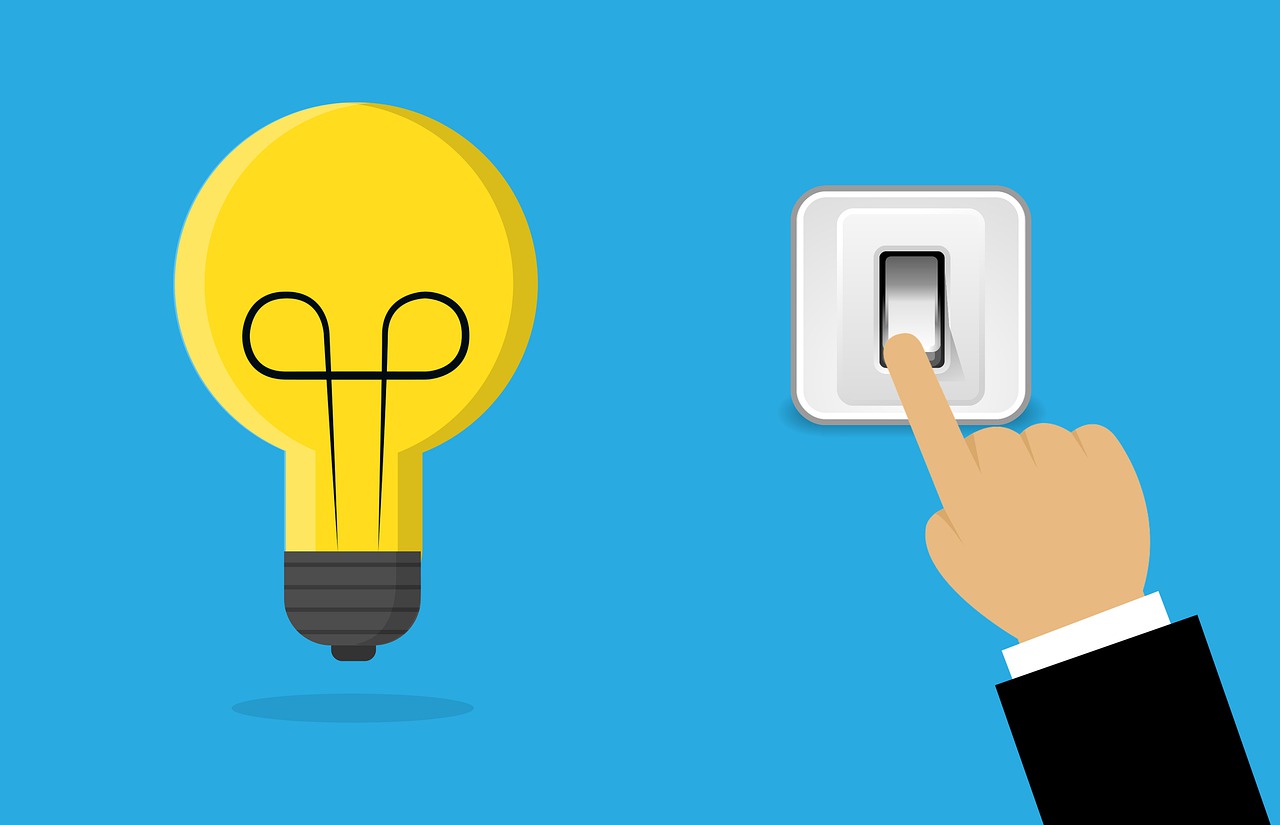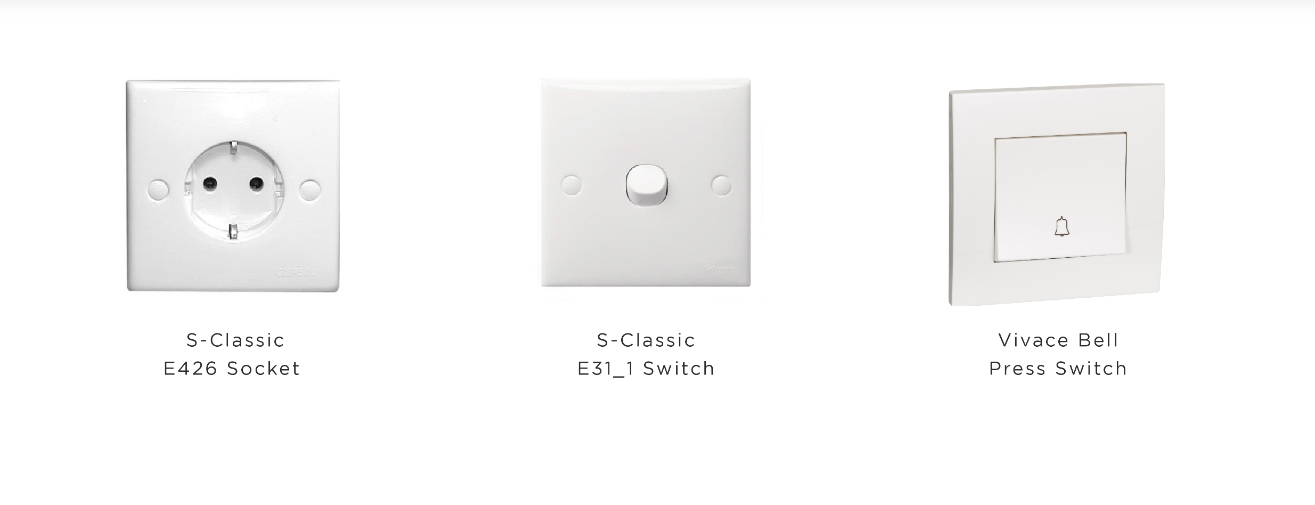8 Fungsi Saklar Listrik, Lebih dari Sekadar On dan Off

Fungsi saklar listrik ternyata bisa lebih dari sekedar on dan off atau mematikan dan menyalakan peralatan elektronik saja. Lebih dari itu, saklar ternyata memiliki fungsi lainnya yang membantu aktivitas kita.
Saklar listrik adalah perangkat sederhana yang biasa ditemui dalam kehidupan sehari-hari. Perangkat ini digunakan sebagai alat untuk mengontrol aliran listrik dalam rangkaian, yang memungkinkan kita menghidupkan atau mematikan peralatan listrik atau pencahayaan.
Meskipun tampak sederhana, fungsi saklar listrik ternyata sangat penting dalam kehidupan dan memiliki lebih banyak fungsi daripada sekadar fungsinya untuk menghidupkan atau mematikan perangkat.
Nah, berikut ini telah dirangkum 8 fungsi saklar listrik yang sangat penting bagi lingkungan rumah maupun industri.
Apa Itu Saklar?
Sebelum membahas fungsi saklar listrik secara lengkap, pertama-tama sangat penting mengetahui pengertian dari perangkat ini. Pasalnya, saklar sendiri merupakan perangkat listrik yang penting untuk mengendalikan arus listrik dalam sebuah rangkaian.
Secara umum, saklar adalah alat untuk memutus atau menghubungkan aliran listrik. Saklar memungkinkan pengguna untuk mengendalikan perangkat listrik dengan mudah, baik itu untuk menyalakan atau mematikan lampu, mesin, atau peralatan elektronik lainnya.
Terdapat berbagai jenis saklar yang digunakan sesuai kebutuhan dan aplikasi, di antaranya adalah saklar toggle, saklar dorong (push button), saklar putar (rotary switch), dan saklar geser (slide switch).
Saklar toggle adalah saklar yang paling umum digunakan dalam instalasi rumah tangga untuk lampu dan perangkat kecil.
Saklar dorong biasanya ditemukan pada bel pintu dan beberapa perangkat elektronik, sementara saklar putar digunakan pada perangkat yang memerlukan kontrol kecepatan atau variasi lainnya, seperti kipas angin. Saklar geser sering digunakan pada peralatan audio atau elektronik kecil.
Setiap jenis saklar memiliki karakteristik dan kegunaan spesifik yang membuatnya ideal untuk aplikasi tertentu dalam sistem kelistrikan.
8 Fungsi Saklar Listrik
1. Mengontrol Aliran Listrik
Fungsi saklar listrik yang paling utama adalah untuk mengontrol aliran listrik dalam sebuah rangkaian. Ketika saklar dalam posisi "on" (hidup), itu membuat kontak listrik tertutup, memungkinkan adanya aliran listrik.
Sebaliknya, ketika saklar dalam posisi "off" (mati), berarti memutus kontak listrik dan menghentikan aliran listrik.
Dengan cara ini, saklar memungkinkan kita untuk mengontrol kapan dan di mana perangkat atau lampu akan menyala atau mati.
2. Memberikan Kemudahan dan Kontrol
Salah satu fungsi utama saklar adalah memberikan kemudahan dan kontrol kepada pengguna untuk menghidupkan atau mematikan peralatan atau pencahayaan tanpa harus mencabut steker dari stopkontak.
Dengan demikian, pengguna bisa merasa sangat nyaman dalam kehidupan sehari-hari, saat ingin menghidupkan lampu di ruangan atau mengaktifkan mesin cuci.
3. Meningkatkan Keamanan
Saklar juga memiliki peran penting dalam meningkatkan keamanan. Misalnya, di rumah, saklar otomatis yang terhubung dengan sistem pencegahan kebakaran dapat mematikan daya listrik pada peralatan jika terdeteksi adanya bahaya.
Hal ini membantu mencegah kebakaran yang disebabkan oleh korsleting listrik atau penggunaan peralatan yang berlebihan.
4. Pemutusan Darurat
Dalam situasi darurat, saklar listrik dapat digunakan untuk memutuskan daya listrik secara cepat. Ini dapat berguna dalam situasi seperti kebakaran atau kerusakan listrik yang memerlukan pemadaman daya secara instan untuk menghindari bahaya lebih lanjut.
5. Kontrol Pencahayaan
Selain menghidupkan dan mematikan pencahayaan, saklar juga dapat digunakan untuk mengendalikan intensitas pencahayaan.
Contohnya, saklar dimmer switch memungkinkan pengguna untuk mengatur tingkat kecerahan pencahayaan sesuai kebutuhan, menciptakan suasana yang berbeda di dalam ruangan.
6. Otomatisasi Rumah
Dengan perkembangan teknologi, saklar listrik semakin cerdas dan dapat diintegrasikan dengan sistem otomatisasi rumah.
Fungsi ini memungkinkan pengguna untuk mengendalikan perangkat dan pencahayaan dari jarak jauh melalui aplikasi di smartphone atau bahkan menggunakan control suara sehingga menjadi lebih efisien.
7. Kontrol Peralatan Rumah Tangga
Beberapa saklar listrik modern memiliki kemampuan untuk mengendalikan peralatan rumah tangga.
Misalnya, saklar pintar dapat menghubungkan ke perangkat-perangkat seperti pemanas air atau AC, memungkinkan pengguna untuk mengatur jadwal pengoperasian, mengoptimalkan penggunaan energi, dan menghemat biaya listrik.
8. Penghias Interior Rumah
Hadirnya beragam inovasi produk-produk saklar saat ini tidak hanya diproduksi dari sisi fungsinya saja, tetapi juga mempertimbangkan aspek estetika interior rumah.
Oleh karena itu, saat ini saklar listrik di dalam rumah juga bisa menjadi penghias interior berkat desainnya yang dibuat semakin menarik.
Powered by Froala Editor

Fungsi Saklar Seri
Saklar seri berfungsi untuk mengendalikan aliran listrik ke dua atau lebih lampu dari satu sumber daya menggunakan satu rangkaian. Dalam saklar seri, beberapa saklar dihubungkan dalam satu jalur, sehingga ketika salah satu saklar dinyalakan atau dimatikan, aliran listrik ke seluruh lampu yang terhubung akan ikut terpengaruh.
Fungsi utama saklar seri adalah untuk menghemat kabel dan memudahkan pengendalian beberapa lampu dari satu titik kontrol. Jenis saklar ini ideal digunakan di area seperti koridor panjang atau ruangan besar yang memerlukan penerangan yang seragam.
Penggunaan saklar seri juga meningkatkan efisiensi energi dengan memungkinkan pengaturan intensitas cahaya sesuai kebutuhan.
Fungsi Saklar Tunggal
Saklar tunggal digunakan untuk mengendalikan aliran listrik ke satu perangkat atau lampu dari satu titik kontrol.
Fungsi utama saklar tunggal adalah untuk membuka atau menutup sirkuit listrik, sehingga memungkinkan pengguna untuk menyalakan atau mematikan perangkat listrik secara manual.
Saklar ini umumnya digunakan di berbagai tempat seperti rumah, kantor, dan industri, di mana pengendalian individual perangkat atau lampu diperlukan. Keunggulan saklar tunggal adalah kemudahan penggunaannya dan instalasinya yang sederhana.
Fungsi Saklar Silang
Saklar silang, atau dikenal juga sebagai saklar silang tiga arah, digunakan untuk mengendalikan satu perangkat atau lampu dari tiga atau lebih titik kontrol yang berbeda.
Fungsi utama saklar silang adalah memberikan fleksibilitas dalam mengendalikan penerangan atau perangkat listrik di area yang luas atau di tempat-tempat yang memerlukan banyak titik akses, seperti lorong, tangga, atau ruangan besar.
Saklar ini mengubah arah aliran listrik di dalam sirkuit sehingga lampu atau perangkat yang terhubung dapat dinyalakan atau dimatikan dari berbagai lokasi.
Fungsi Saklar dalam Instalasi Penerangan
Fungsi saklar dalam instalasi penerangan adalah sebagai alat pengendali utama yang memungkinkan pengguna untuk mengatur aliran listrik ke lampu atau beberapa lampu sekaligus dalam suatu ruangan atau area tertentu.
Dengan menekan saklar, pengguna dapat menyalakan atau mematikan lampu, yang membantu menghemat energi dan meningkatkan efisiensi penggunaan listrik.
Saklar juga berperan penting dalam kenyamanan dan keselamatan, karena memudahkan akses untuk mengontrol pencahayaan sesuai kebutuhan tanpa harus langsung berinteraksi dengan sumber listrik.
Saklar Beragam Desain dan Fungsi
Beragam jenis dan desain saklar untuk dipasang di rumah bisa didapatkan melalui PT Mitra Cipta Hardi Elektrindo sebagai distributor resmi merek elektrik, termasuk Schneider Electric yang memproduksi saklar listrik rumahan serta industri.
PT Mitra Cipta Hardi Elektrindo menghadirkan beragam varian produk saklar untuk hunian, hotel, gedung dan industrial serta beragam kebutuhan alat listrik lainnya yang berkualitas, resmi, asli dan bergaransi untuk kebutuhan hunian, ritel maupun industrial Anda secara lengkap dengan pelayanan ramah dan memuaskan pelanggan, one stop solution.
Mengetahui fungsi saklar listrik sangat penting karena benda ini adalah komponen krusial yang mengendalikan aliran listrik. Dengan memahami fungsi saklar, Anda dapat meningkatkan keselamatan dan efisiensi penggunaan energi listrik, mencegah kerusakan peralatan, serta mengurangi risiko bahaya kelistrikan.
Powered by Froala Editor
Related News



